
This article was written by CHRISTINE C on askaprepper.com
Knowing how to find, grow, and use medicinal herbs is an important skill to develop for any seasoned prepper.
After all, many of the life-saving pharmaceuticals we use today were created using compounds from common plants. For example, aspirin comes from white willow bark.
Whether you’re growing a medicinal herb garden, or simply want to know how to identify and make use of common medicinal plants in an emergency, here are 20 medicinal herbs every prepper should grow.
Evening Primrose
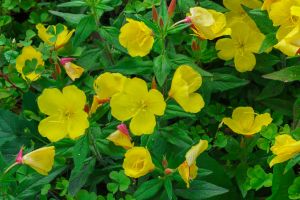
It is known for its colorful yellow or pinkish flowers that bloom at night in spring and summer.
It is both a medicinal and an edible plant.
Traditionally, Native Americans were known to brew tea from the whole plant for coughs, stomach ache, and sore throats.
The root, flowers, and young leaves are edible and rich in nutrients like vitamin C. The roots and stems were used to create poultices and tinctures to encourage fast healing for cuts and bruises.
California Poppy
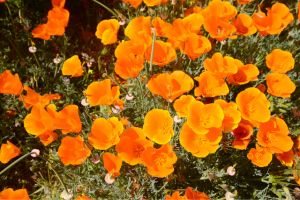
California Poppy is an edible, medicinal, flowering plant that blooms from late winter to early spring. The roots were used by Native American tribes to create a natural analgesic to manage pain.
The Californian Poppy doesn’t have any narcotic or addictive effects like the opium poppy does.
However, it can help with sleep, anxiety, and pain management. The golden flowers and poppy seeds can be eaten like a snack and the pollen can be used as a dye.
Although many Native American tribes used California Poppy for medicinal use, other tribes refused to use the plant due to its potential for toxicity when not properly prepared.
Calendula
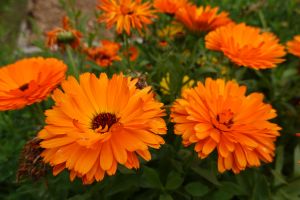
Calendula blooms from late fall through spring. Originally from Southern Europe, it quickly became popular around the world for its health benefits.
The dried petals of the calendula plant can be used in tinctures, infusions, ointments, and wound-cleaning solutions to prevent infections.
It can also be made into a cream or salve to relieve discomfort from some types of radiation burns. Learn here how to use calendula to make your own powerful remedies.
Lavender
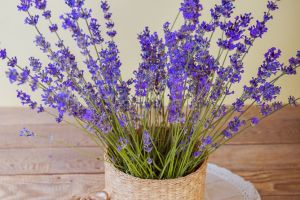
This fragrant, flowering plant has over 40 known species. True Lavender, also known as English Lavender, is the most commonly used variety for medicinal and culinary use.
Lavender grows naturally throughout Europe and Asia and is known for its antiseptic, antimicrobial, anti-inflammatory, antibacterial, and antifungal properties.
Lavender oil is known for its ability to treat skin ailments such as fungal infections and cuts. Lavender leaves, flowers, and oils can also be used in a bath soak to help with aching joints and muscle pain. According to some studies, lavender can even help wounds heal faster.
Yarrow
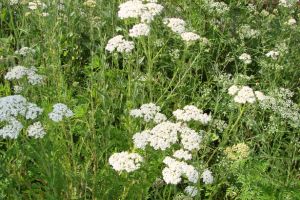
Considered a “life medicine” to Navajo tribes of the past, Yarrow is an herb with powerful astringent, antiseptic, antibacterial, anti-inflammatory, anti-spasmodic, and hypotensive properties.
Native American tribes were known to chew on raw yarrow leaves to help ease the pain and swelling of a sore tooth.
Infusions were considered an effective treatment for earaches and infections. In European folk medicine, yarrow poultices were used to treat wounds and herbal tea was used to stimulate blood circulation and liver health.
Get Your Own non-GMO Yarrow Seeds, Last 30 Packs Left!
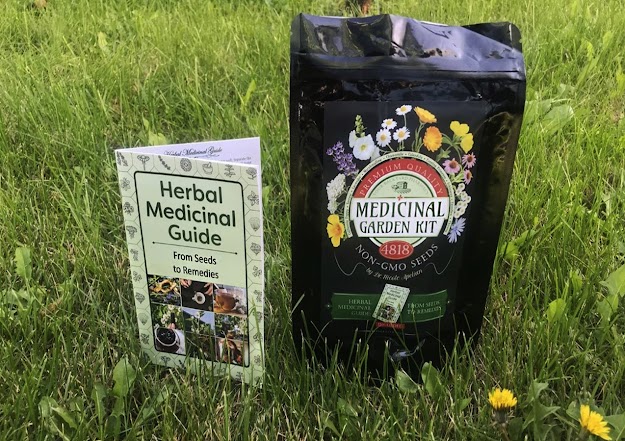
It’s important to note that Yarrow is quite toxic to household pets. It can also lead to a rash or other irritation for people with sensitive skin.
Feverfew
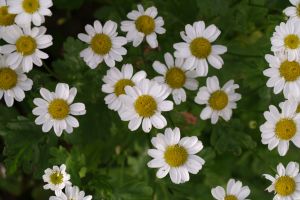
Feverfew is a flowering plant in the Daisy family. It is usually harvested around Midsummer or when its flowers are in full bloom.
It was traditionally used as a cure-all folk medicine for treating various symptoms from migraines to stomach aches, as well as other health concerns.
Chewing on the leaves or brewing a tea can not only dull the pain of migraines but also lessen the occurrence of migraines. However, like all medicines, it may cause side effects for some people.
Chamomile
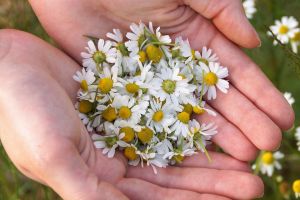
Chamomile is a popular herb best known for its anti-inflammatory effects. Egyptian, German, and Roman chamomile are the three chamomile species most commonly used in medicine.
Chamomile has a long history of medicinal applications, but is most famous for its calming properties.
It is also used to alleviate digestive issues and mild abdominal pain. When used topically, it can soothe skin irritations, sun burns, and promote faster wound healing. Chamomile is typically consumed as a tea, but it can also be used in extracts, oils, poultices, infusions, decoctions, and salves.
Marshmallow
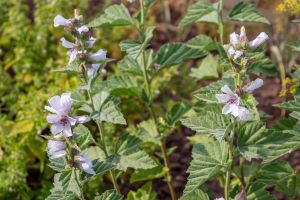
The roots, leaves, and flowers contain edible mucilage, a substance with proven soothing properties.
Marshmallow is commonly used to relieve irritation and inflammation of the mucous membranes, making it an effective treatment for sore throat, cough, and digestive issues.
The Most Powerful Plant for a Healthy Digestive System (Video)
Marshmallow can be made into a tea or infusion, or applied topically as a poultice or ointment for skin irritations and wounds. However, it may react with some diabetes medications.
Chicory

Chicory is an important medicinal plant that is cultivated worldwide. All parts of the plant are edible for people and animals to enjoy and can even be used as a coffee alternative.
In traditional medicine, all parts of the plant can be used to make topical treatments like poultices and salves.
Chicory root can be made into a tea to induce mild diuretic effects, lower blood pressure, and alleviate pain associated with gallstones, kidney stones, urinary tract infections, and inflammation of the liver.
Echinacea

Several studies have suggested that echinacea has immune-boosting and anti-inflammatory properties that can help relieve pain, reduce inflammation, and offer protective antiviral and antioxidant effects.
When consumed as a tea, it can help treat symptoms of the common cold and respiratory illness.
Related: Antibiotic Herbs And Plants To Grow Before SHTF
Native Americans used echinacea topically to treat burns, insect bites, stings, and more. Overall, echinacea is a valuable herbal remedy that can support immune health and overall well-being whether consumed internally or externally.
Sage
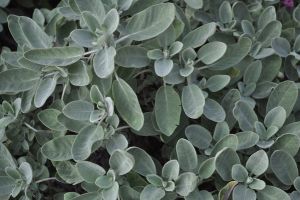
Sage is a widely cultivated medicinal plant that gained prominence in Native American and Chinese herbal medicine. Although there are hundreds of sage species, Common sage is the most used variety today.
It’s traditionally harvested for medicinal use in early summer.
Sage is a proven anti-inflammatory, anti-virus, and anti-bacterial — and has also been used to manage high blood sugar, oral pain, stomach pain, and cholesterol.
As powerful as this herb may be, sage also contains a chemical called thujone which can cause seizures or damage to your liver and nervous system in large doses. Because of this, sage should be used with care.
Peppermint
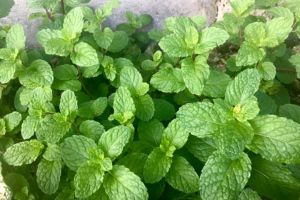
Peppermint, a wide-ranging hybrid species of mint, can be found growing wild throughout the Americas and Europe and is cultivated for its medical benefits worldwide.
This potent herbal remedy is known for its powerful antiseptic, antispasmodic, and antibacterial properties.
It is known for easing nausea and upset stomachs, calming stress, promoting good oral health, treating muscle and joint pain, and supporting restful sleep.
Stinging Nettle
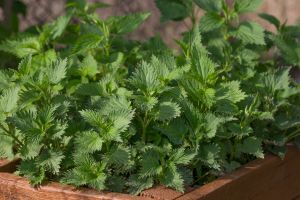
Stinging nettle is known for its anti-inflammatory benefits and natural diuretic properties — It’s also thought to help alleviate seasonal allergies.
When eaten as food, stinging nettle is packed full of vitamins C, K, iron, and calcium. It can be consumed alone, with other food, or in herbal tea infusions.
However, the fine hairs on stinging nettle leaves can cause painful irritation to the skin. So, it is important to cook, dry, boil, and strain the leaves before consuming them. Additionally, stinging nettle can cause changes in blood pressure for some people.
Rosemary
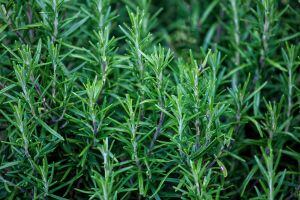
Rosemary is an aromatic herb with needle-like leaves.
It has been cultivated as a folk medicine to help manage conditions like headaches, stomach aches, spasms, and muscle pain. It’s also believed to boost brain health, the immune system, and the circulatory system.
As food, rosemary is rich in nutrients like manganese, iron, calcium, and B vitamins which can help provide a nutrient boost when times are lean. According to some studies, rosemary has potent antibacterial, antiviral, and antifungal properties.
Comfrey

Thanks to it’s astringent and anti-inflammatory properties, comfrey has been used as a treatment for bruises, sprains, and pulled muscles. When applied as a compress or poultice, it was believed to lessen inflammation. The Native Americans considered comfrey a sacred multi-purpose healing plant and used it in both topical treatments and teas using dried leaves.
Comfrey was also used for food in Ireland (for both people and livestock) during the potato famine of the 1840s. Conversely, in the US during the Great Depression, it was this superweed that saved large communities from starvation. It could be a real lifesaver when there’s no other food around.
Goldenseal
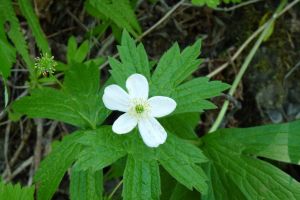
Goldenseal has strong anti-inflammatory and antimicrobial properties that promote faster wound healing. It is often found in herbal remedies for hay fever, the flu, allergies, and for treating symptoms like sore throat and congestion. New studies have also identified Goldenseal as a potential natural LDL-c (“bad cholesterol”) lowering agent.
Goldenseal is mostly used as a “natural antibiotic” and is often combined with echinacea to help strengthen the immune system.
To prepare for medicinal use, roots are typically harvested, dried, and ground to create teas, poultices, tinctures, and salves.
Nasturtium
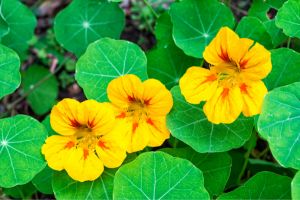
Nasturtium is a powerful herb that has anti-septic, anti-fungal, and anti-inflammatory properties. The flowers and leaves are edible and contain important nutrients like vitamin C, calcium, potassium, phosphorus, magnesium, zinc, copper and iron.
The leaves, seeds, and flowers can help fight infections when brewed as a tea.
They can also be effectively used as an herbal salve, poultice, cream, oil, decoction, or tincture.
Nasturtium contains mustard oil and can cause skin irritation. Additionally, pregnant women should not use this herb.
Mullein

Mullein is a wild flowering herb native to Europe and Asia but has since been cultivated worldwide for its many interesting uses.
For example, early settlers and Native Americans were said to line their shoes with mullein leaves in cold months.
What Happens If You Smoke Mullein (Video)
What’s more, mullein stalks were used as torches, the flowers were crushed to make dyes, and fishermen were known to throw the rotenone-rich seeds in slow-moving waters to stun and catch fish more easily.
Mullein has a rich history of medicinal use in both European folk medicine and Native American healing practices. According to studies examining the efficacy of Mullein in medicine, Mullein can be used as an effective antispasmodic, expectorant, and for its anti-inflammatory properties. A tea brewed with dried mullein leaves can be used in an emergency to treat cough, tuberculosis, bronchitis, pneumonia, headaches, and earaches.
Spilanthes (The Toothache Plant)
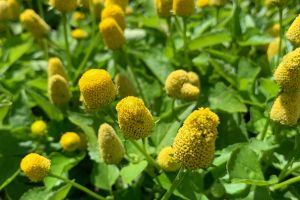
Spilanthes, also known as “toothache plant”, is famous for its edible parts and mouth numbing flowers. Thanks to the pain-relieving, anti-inflammatory, and analgesic properties of spilanthol in the plant,
Spilanthes is a blessing to have around when you have a painful toothache.
Chewing the raw flowers of this plant can provide you with almost immediate oral pain relief. The intense tingling sensation provides a deep mouth cleansing that can help to ward off early signs of infection.
Additionally, the leaves of Spilanthes are edible and are often eaten raw or cooked with other foods for a vitamin-packed nutrient boost.
Self-Heal/Heal-All
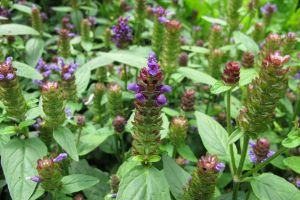
Self-heal, also called “Heal-all” or “Heart-of-the-earth”, is a well-known medicinal plant that has blooms in late summer, with unique, purple-colored flowers. Historically, it’s believed to help remove heavy metals from the body and clean deep wounds. Self-heal has shown promise during lab studies for its potent anti-inflammatory and tumor-fighting properties.
Self-heal can be used topically, in a salve or poultice, or prepared for internal use, such as a tea or capsule. However, if you’ve never used self-heal internally before, you may experience side effects like nausea or a headache; It may also interact with certain medications and pregnancy.
The plants on this list can treat many common ailments and even save lives in an emergency. You can buy packets of medicinal herb seed for cheap, and they will pay dividends and become invaluable in a crisis when access to medications is scarce.
Developing a working knowledge of local medicinal plants can be a lifesaver, especially if there’s limited access to adequate nutrition or emergency services in your area.
Still, you may need to do some extra research to familiarize yourself with the medicinal herbs that grow in your region, toxic look-alikes to avoid, and how to properly prepare the plant for medicinal use. That’s why I trust this guide. It’s not an ordinary survival book—it’s a practical resource that teaches the age-old wisdom of living off the land. So, when you’re planning your escape, make sure this handbook is in your backpack. It could be your key to staying safe when everything else goes wrong.
Lastly, before using medicinal herbs, it’s important to weigh the risks and benefits as some herbs may not be safe for some people.
